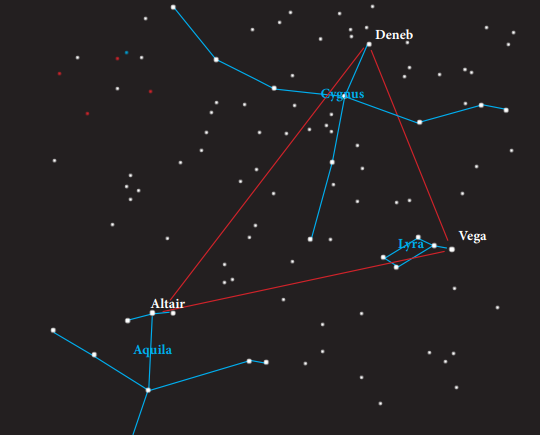INTRODUCTION
The division of the sky into constellations is probably dictated by the need for people to navigate more easily through the sky. It is natural for the orientation to begin with the most characteristic constellations that contain bright stars or easily distinguishable figures.
Orientation on the Sky
North star

Because of the spinning-top like movement on Earth (called precession), the stars that are closest to the North Pole are changing with time. However, this process takes a very long time and the Polar star remains the same for a few centuries. Currently this "most important star" in the sky is the brightest star of the constellation Ursa Minor. It is far from being the brightest star in the sky, and the constellation itself is not the easiest to recognize especially nowadays in cities with great light pollution. Therefore usually Ursa Major is used as a guide to find the Polar Star.
There is hardly anyone who cannot recognize the shape of Ursa Major, or “The Big Dipper” in the sky. The Big Dipper is a shape made up of seven almost identical stars known under different names in different countries (e.g. “The large wagon” in Bulgarian). If we create an imaginary line between the first two stars from the Big Dipper and then continue this line to the top of the Big Dipper until about five times the distance between these two stars, we will reach the Polar Star (Fig. 2).

Starting from Ursa Major we can also find one of the brightest stars in the sky - Arcturus from the constellation Boötes. It is reached by taking the arc of the “handle” of the Big Dipper. If we continue this arc, we reach another very bright star - Spica from the constellation Virgo. Virgo, is well observable in spring. In spring one can also find other beautiful constellations high above the horizon: Corona Borealis with the bright star Gema, as well as the heavenly hero Hercules. Another constellation for this season, with not just one, but two bright stars (Rigel and Dennebola) is the zodiac constellation Leo.

In summer, it is best to start orienting in the sky from another very popular asterism - the Summer Triangle. It connects the brightest stars of three beautiful constellations - Vega of the Lyra constellation, Deneb of the constellation Cygnus and Altair of the Aquila constellation. The Lyra constellation represents a diamond of four almost equally bright stars, and Vega, brighter than them, is close to one of the stars of the diamond. Imagining a flying Swan from the bright stars of Cygnus does not require much imagination. The bright star Deneb is in the tail of the Swan, its neck runs along the Milky Way and its wings are across the neck, forming a cross that has given the Bulgarian people the name of this constellation "Cross". The "North Cross" is also a popular asterism among many other nations.

The Pegasus constellation is a natural landmark in the autumn starry sky. "The Big Square" - Pegasus' asterism is relatively easy to find in the sky. The constellation Andromeda begins from the star closest to the north pole. In fact, this star belongs to Andromeda, although we mentally link it to the square whose other three stars are from Pegasus. Andromeda is associated with an arc of three equally bright stars, but some maps show it as two arcs coming out of the square in Pegasys. Under the rainbow of Andromeda we can see the small constellations Triangle and Aries, and even further down, Pisces extend to surround half of Pegasus’. If we continue with Andromeda's main arch, we reach the constellation Perseus. It has the form of the Greek letter λ, but perhaps a more interesting fact about it is that it is surrounded by bright star clusters at both ends. In the north, the χ and ɧ star clusters are seen as "blurry spots". In the south, one can find the bright and very impressive star cluster Pleiades. However, the Pleiades are part of the constellation Aries, which means that we can use them to find the characteristic shape of this zodiacal constellation and its brightest star - the orange Aldebaran.

Thus we reach the winter sky, which many people consider the most beautiful view of the sky. If we go out in a cold but cloudless winter night outside, there is no way that the mighty figure of Orion, the celestial hunter, will remain unnoticed. Some see the shape of Orion as that of a sand clock, others literally "see" the figure of a hunter who holds a mace in his right hand, raised above his shoulder (the red star Betelgeuse), in his left hand (the Beatrix star) holds lion's skin as a shield, a belt composed of three equally bright and equally spaced stars, the sword hanging from his belt and finally the legs of the giant where the stars Rigel and Saif shine. The Star Betelgeuse is also part of another asterism called the "Winter Triangle". The other two stars of the triangle are the brightest stars in the sky - Sirius from the constellation Canis Major and the Star Procyon from the constellation Canis Major. This part of the sky also contains the Milky Way (our Galaxy) as well as other prominent stars - Pollux and Castor from the constellation Gemini and the star Capella from the constellation Auriga.



